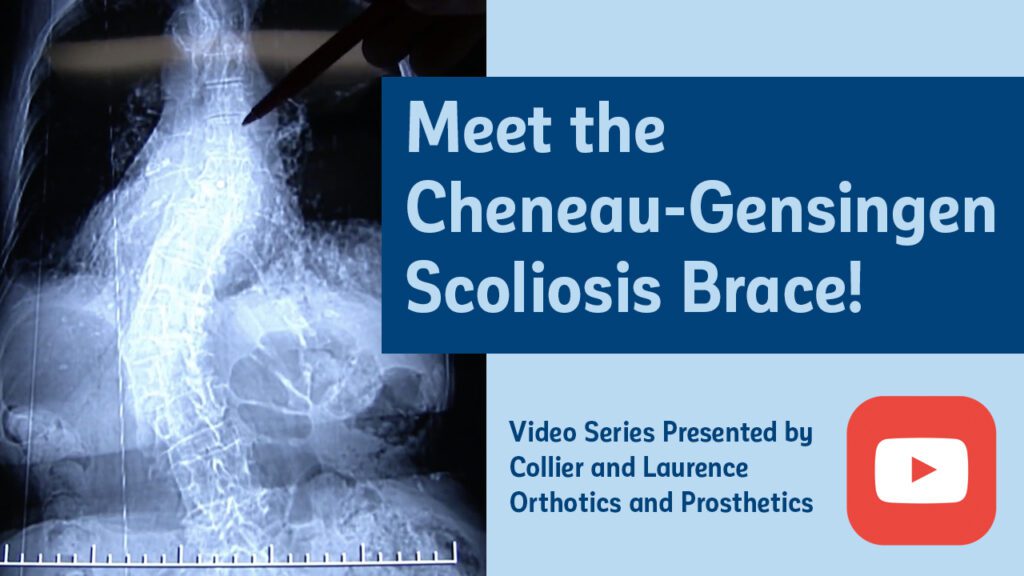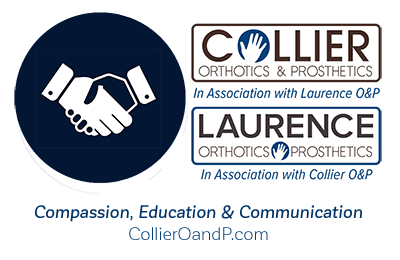Treating Scoliosis
Patient care after a scoliosis diagnosis
Scoliosis can be a scary diagnosis for a parent and child, and we value the importance of addressing the concerns of the family as we care for our young patients. We want you to be fully informed about your child’s diagnosis and treatment. Once diagnosed, staying vigilant with the course of treatment is the key to progress. Depending on the severity, treatment success can mean curve reduction or just stopping the progression of the curve.
CCS Paneled practitioners with scoliosis experience
Over the course of a year, a child will go through many growth and development stages. Scoliosis treatment will make the most difference during this time when bones are flexible, so brace compliance is very important. With education about their diagnosis and treatment, and with a supportive care team, a child can thrive despite their scoliosis.
We help you explore all brace treatment options.
You and your child should choose the brace treatment that is right for you. Wearing a scoliosis brace will be challenging for you and the patient. It is difficult to see your child struggle. Try to stay positive – staying consistent with therapies now can make a huge difference in their adult lives. We encourage you to ask as many questions as you need to determine the best course of scoliosis treatment for your child.
Our practitioners treat scoliosis with more traditional methods if the Cheneau-Gensingen brace is not appropriate. The more traditional brace for adolescent idiopathic scoliosis is the Boston TLSO (thoracic-lumbar-sacral orthosis). The Boston TLSO fits under the arms and around the rib cage, lower back, and hips. Chloe shares her inspirational story in this video.
Treating Scoliosis with the Chéneau-Gensingen Brace

Collier and Laurence Orthotists are Certified to provide the 3D-Cad Cam Chéneau-Gensingen Scoliosis Brace.
This gold standard of scoliosis bracing treatment is the result of three generations of development.
As a treatment solution, this brace can be 90% effective for avoiding surgery with full patient compliance. In some cases, patients have been able to partial reimbursement through their insurance.
Best practices for Schroth Therapy from our friends at Scoliosis3DC.
Learn about the history of the Gensingen brace development and how they set the standards for better scoliosis patient outcomes.
The 3D Chéneau-Gensingen brace utilizes the latest bracing technology.
- CAD/CAM is used for the creation of each curve-pattern specific brace for a three-dimensional treatment addressing all three planes
- Treats mild, moderate and severe scoliosis
- A viable option even for patients with 40°+ curves
- Custom fabricated with voids and pressure zones to work in conjunction with Schroth Method Best Practices
- Front closing design and less material for more comfortable fit and ease of application
Our Scoliosis Brace Protocol
When seeking scoliosis treatment, protocol is determined by the referring physician. This procedure can be different for different doctors, and the Collier and Laurence team members work closely with your providers to provide the best possible outcome for our patients.
The Collier-Laurence Methodology
Once our patient receives their brace, we ask them to get an x-ray, in their brace, in 6-8 weeks from the day of delivery. We review a copy of the x-ray so we can assess the function of the brace. Scoliosis treatment requires on-going adjustments and continued care as the patient grows. Brace straps wear out in 3-5 months and need to be replaced and then re-marked for tightness.
When patient has 4 month follow-up we review their in-brace x-ray. This gives us information about whether the brace is working or not. The “medicine” of the brace is to push on the curve and try to reduce it by up to 50%. Follow up with an x-ray that is out-of-brace, it is more difficult to assess what needs to be done to the brace for better performance.
There are different ways to measure for these braces and to blueprint their design. All require an initial x-ray for the blueprint to be made. We have found that fitting modules is far superior to having braces made and finished by manufacturers. Follow-up on brace wear will be done either in a clinic situation or in the office. We are looking for a number of things which include: Cobb angle, height and weight, posterior opening of brace, length of brace, tightness, and any pain issues. We find subsequent x-rays in brace to be the most useful if the brace needs to be improved. Brace adjustments without x-rays in brace are more challenging.
Follow up with your practitioner accomplishes a number of things:
- Improved communication between patient, parent, doctor and orthotist
- Improved compliance by having concerned professionals explaining the importance of wearing the brace
- X-ray verification that the brace is working properly or indications that the brace needs adjustment to be more effective
Some providers take an initial x-ray in the brace, but their subsequent x-rays are done out of the brace. This does not always give our practitioners the information they need to know. Patient follow up periods can be 4, 6, or 12 months depending on physician.
Tip: Write down your questions between appointments so you can easily remember everything you want to discuss.
Community Resources
There are support groups online and offline that can be a huge benefit for young patients learning to deal with their diagnosis and wearing a brace. To get you started, here is a Facebook link for Curvy Girls Scoliosis Foundation. They also have a website with additional information about living with scoliosis.
Looking for a solution or a second opinion?
Contact one of our specialists at 916-979-9729 or email us.


